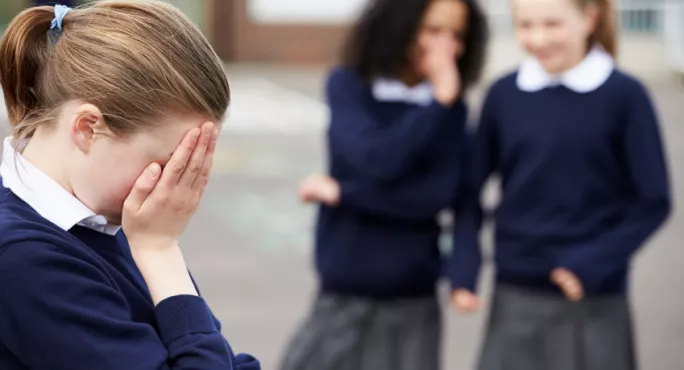- Home
- Can we eradicate bullying in schools?
Can we eradicate bullying in schools?

In the minds of children, especially bullied children, bullying is a simple phenomenon. The strong abuse their power to prey on the weak, and there is nothing much that can be done about this except a stronger exertion of adult power.
But in the minds of adults, especially a subset of educational professionals, bullying is a complex phenomenon. Those who seem to be strong are actually weak and the reasons for their bullying stem from this hidden inner weakness. The solutions to bullying therefore lie in psychological interventions aimed at the perpetrators.
As is often the case, the weight of scientific evidence comes down strongly on the side of the children and their natural intuitions. We in the psychological and educational professions have made bullying out to be a far more mysterious phenomenon than it really is. The real victims of bullying are in fact the children who are bullied. Furthermore, there is a good argument that bullying is something of a natural phenomenon that will be essentially impossible to eradicate, though with good discipline and care for the victims, it can probably be minimised. For those who understandably remain unconvinced by my bare assertions, I will attempt to sketch some of the evidence supporting these conclusions.
What makes a bully?
The oft-cited figure of the bully who is secretly psychologically tormented appears to be largely fictional. Across multiple studies, bullies generally enjoy quite good mental health (with the striking exception of the fairly small minority of bullies who are both bullies and victims at once). They are more socially (and perhaps also sexually) successful in adolescence and also in adulthood. The relevant literature is reviewed in Volk et al (2015).
Meanwhile, the converse is true for their victims, who suffer mentally both at the time of their victimisation and long into adulthood. While it is difficult to extract true knowledge of causal relationships from purely observational data - even with high-quality controls - researchers have conducted studies of identical twin pairs (ie, genetic clones who share the same environment) where one twin is bullied and the other is not. These studies do appear to reveal that bullying genuinely hurts and continues to hurt even after the bullying itself has ended.
Bullying victims have higher rates of psychological pain at age 23, and also at age 50. This psychological pain is coupled with higher rates of depression, anxiety and suicidality. The precise mechanisms are not known, but in one twin study, bullied twins have been found to have a blunted cortisol response to stress, as compared with their non-bullied co-twin.
What can we do about bullying?
This stark data brings us back to the original question: what, if anything, can be done? Anti-bullying programmes show modest but useful effects in a recent meta-analysis, with greater efficacy among younger children than among adolescents. It is just a hunch, but this might be because such programmes do not address the psychosexual competition that probably underpins a great deal of adolescent bullying (among both boys and girls).
Readers of this article should take any evolutionary-psychology speculation with a large pinch of salt, regardless of the source. Nevertheless, given the fact that bullies appear to be fairly well adjusted - far more so than their victims - researchers have explored a potentially adaptive role for bullying: it may serve both to increase access to resources and mates, functioning as a signal of social dominance (displays of dominance are effective mating tactics in both the animal and human kingdoms).
It would be wild speculation to guess that bullying may be especially prevalent in classrooms because the dominance hierarchies that children naturally form elsewhere - such as in the playground - are deliberately disrupted by adults in the classroom, and classroom bullying is a method of re-establishing them. Nor is it clear how such a hypothesis could be tested.
This would appear to leave us stuck at the bullied child’s original desperate plea: assert adult authority. Bullying is a show of strength, not weakness, and given its utility to the bullies of this world, it might not be possible to eradicate it (though programmes aimed at the culture of the whole school show promise, such as KiVa).
A rigid insistence on immaculate standards of classroom behaviour would probably go a long way towards minimising much of the subtle tormenting that goes on every day. Even then, we should be realistic and gentle towards the victims. I had one very bad year of bullying in my penultimate year of prep school, and when it all got a bit much, I’d take the day off and work at home. The school registrar, a wonderful lady whose kindness I have never forgotten, was very good at overlooking these well-timed absences.
Andrew Sabisky is a freelance writer and independent researcher
Register with Tes and you can read two free articles every month plus you'll have access to our range of award-winning newsletters.
Keep reading with our special offer!
You’ve reached your limit of free articles this month.
- Unlimited access to all Tes magazine content
- Save your favourite articles and gift them to your colleagues
- Exclusive subscriber-only stories
- Over 200,000 archived articles
- Unlimited access to all Tes magazine content
- Save your favourite articles and gift them to your colleagues
- Exclusive subscriber-only stories
- Over 200,000 archived articles

